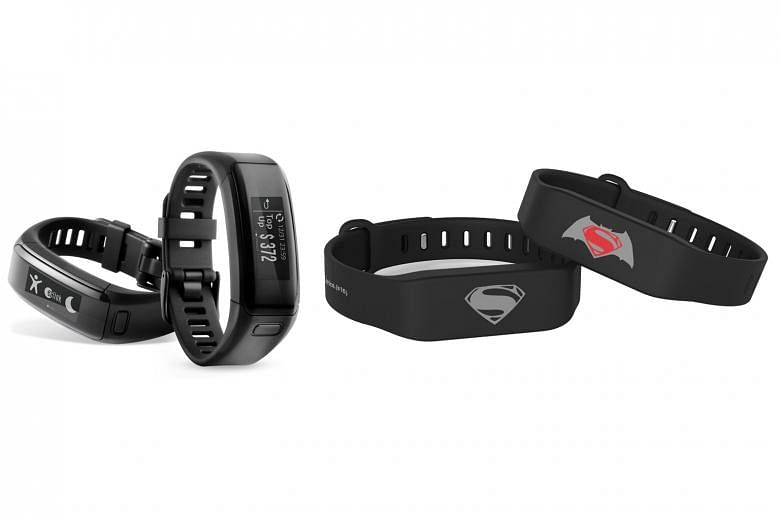With a tap of the wrist, you can soon pay for bus and train rides if you have ez-link compatible fitness trackers.
China-based Watchdata Technologies and United States-based Garmin have incorporated a smart chip in their trackers to allow them to work like an ez-link card and be tapped on contactless readers.
This was done in partnership with EZ-Link, which issues ez-link cards here, and could signal a new era for smart wearable technology and a cashless society.
The ez-link wallet is also accepted at 30,000 retail points here, including Giant and Cold Storage supermarkets, as well as Guardian, 7-Eleven and KOI cafes.
For starters, only two devices - the Watchdata Batman v Superman Fitness Tracker X EZ-Link, and the Garmin vivosmart HR with EZ-Link - can be used to pay for public transport rides.
The Watchdata band will be available for $42.80 on EZ-Link's online store from next Tuesday, while the Garmin band will go for $259 at major retailers in Singapore from end-March.
"This milestone marks the beginning of a new era for smart wearable technology," said Mr Huang Wenwei, Watchdata's general manager of Payment & ID. He said it will add the ez-link function in more products later.
Mr Cris Duy Tran, a consulting analyst of digital transformation at market research firm Frost & Sullivan Asia-Pacific, said: "The ez-link function is a bonus for existing fitness fans."
Such contactless payments use the wireless Near Field Communication (NFC) technology to transmit data between the wearable device and a contactless payment reader.
Mr Al Sundoro, Garmin South Asia's general manager, said its partnership with EZ-Link follows a similar initiative last year in Taiwan that allows its vivosmart HR band users to tap and pay for goods, as well as train and bus rides, in Taiwan.
Garmin said that it has sold more than 10,000 units of the NFC wearable device in Taiwan since July last year.
Mr Clement Teo, principal analyst at market research firm Ovum, said incorporating the ez-link wallet in wearables is a "step forward" to becoming cashless in Singapore. But it stops short of bringing total convenience to the masses.
"People still need to carry multiple devices and plastics to pay for different things," said Mr Teo.
For instance, ez-link cards do not work at some carpark gantries. Motorists still need their CashCard, issued by Nets, a consortium of local banks.
Other NFC-based e-wallet services such as Apple Pay, Android Pay and Samsung Pay cannot be used for transit payments.
There are also a limited number of NFC smartphones that can work with the NFC SIM cards, sold here since early last year, to allow commuters to tap their phones to pay for transit rides.
The Apple iPhone, for instance, cannot be used for transit payment. The Straits Times understands that Apple did not submit its phones for certification, done by a local consortium that includes Singtel, StarHub, M1, Citibank Singapore, DBS Bank and smart card chip maker Gemalto.


